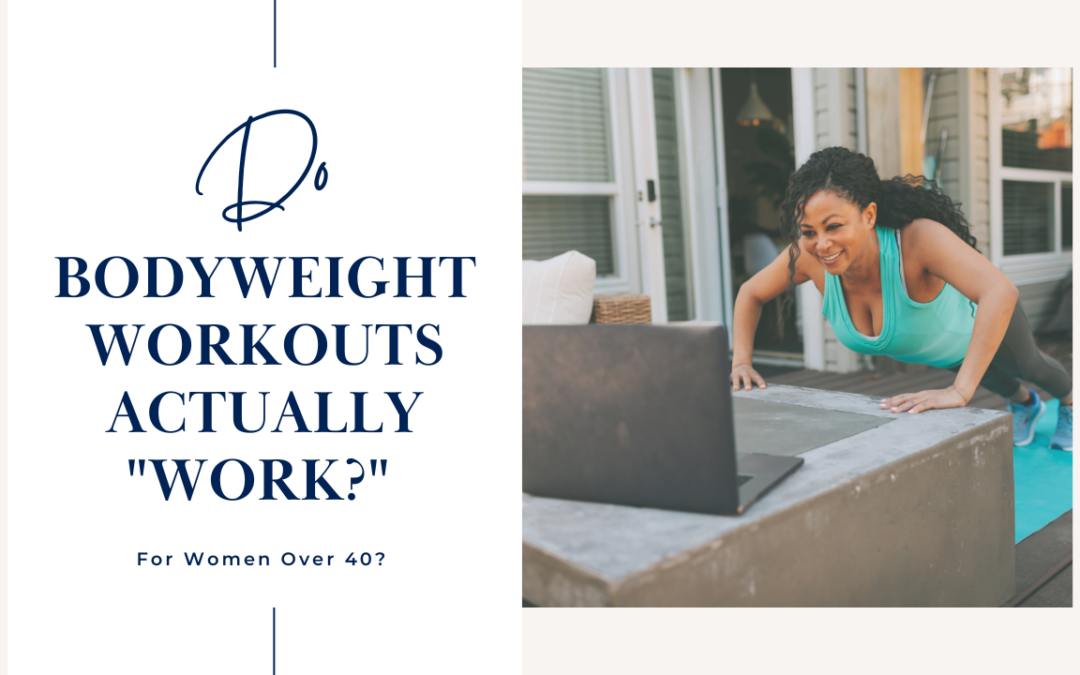
by EM2WL | Jan 26, 2023 | Fitness Cycles (Periodization), Strength Training
If you’re a woman over 40, you may be wondering if bodyweight workouts can really help you build muscle and lose fat. After all, getting to the gym isn’t always easy with your busy schedule. But do bodyweight exercises really work? Is it possible to lose weight or build muscle using only your own body weight? Here, we dig into the truth about bodyweight workouts.
The Role of Calories
Calorie intake plays a huge role in both losing weight and gaining muscle. To lose fat, you need to create a calorie deficit by eating fewer calories than what your body needs to maintain its current weight. To gain muscle, on the other hand, you need to consume more calories than your body needs so it can use those extra calories to build muscle mass. Once your calorie intake is in check, then you can focus on your workouts.
Building a Strategy
When it comes to bodyweight workouts for women over 40, having a strategy is key if you want the exercises to “work” for you. Just like any workout plan that uses dumbbells or barbells, bodyweight plans should also be periodized—meaning they should have specific goals and progressions that help you reach those goals. For example, if one of your goals is gaining strength, then make sure that each session is focused on building strength rather than endurance or power (which are other types of periodization). This will ensure that the exercises are actually helping you reach your goals instead of simply wasting time with random exercises.
Rep Ranges Matter Too!
You also need to make sure that the rep ranges used in each session match the type of goal being worked on—for example, if your goal is hypertrophy (gaining muscle size), then don’t use endurance rep ranges (12+ reps). Instead, stick with 8-12 reps for hypertrophy-focused training sessions and 3-5 reps for strength-focused sessions.
Exercises can (and should!) also be manipulated depending on where you are in your periodization—you can either make them easier (more reps) or harder (less reps) by changing variables such as tempo or range of motion in order to produce muscle fatigue appropriate to your intended rep range better.
For example, elevating your feet on an incline pushup makes the exercise more difficult than doing traditional pushups on the ground would be; conversely, lowering yourself onto a low box makes pushups easier because it takes some of the tension off of your muscles during the movement.
Knowing how and when to manipulate exercises can keep your workouts challenging and effective — no matter what equipment (or lack thereof) is used!
In conclusion, yes – bodyweight workouts can be effective at helping women over 40 build muscle and lose fat! While managing calorie intake is important no matter what kind of exercise program you choose, having a well-thought-out strategy and understanding how rep ranges work will help ensure that the exercises chosen match up with whatever goal(s) being worked on — whether it’s gaining strength, building muscle, or increasing endurance!
With these tips in mind – get out there and start crushing those bodyweight workouts!

by EM2WL | Aug 6, 2020 | Consistency, Fitness Cycles (Periodization), Videos
(To interact LIVE and ask your questions follow EM2WL over on Facebook to get notifications when a new broadcast is scheduled!)
How to decide what workouts you should be doing?
There are SO many moving parts when it comes to deciding what type of workouts you should be doing. The main factors to consider are your goals, where you are in your fitness journey, and the strategy required to get you to where you want to be.
Let’s take a deeper look.
Goals
“Fitness” goals and ability vary DRASTICALLY from one person to the next, and so should the workout style…
You may be working out to improve health markers (lower cholesterol, get type II diabetes under control), to finally get that six-pack, or be anywhere in between. The actual goal doesn’t matter, so long as you know what it is, because different goals typically require entirely different approaches.
Many unproductive dieters can attribute years of failed fat loss attempts to either having no specific goal (i.e. “getting in shape”) or expecting one workout style (i.e. running) to accomplish multiple –often opposing– goals (i.e. lose fat AND gain muscle/build strength AND increase endurance).
If the goal is to get stronger for example, a circuit-heavy routine just won’t cut it. Many people looking to get “toned” would be hard pressed to define muscles they’ve never taken the time to build. Increasing your mileage on the treadmill (or pounding the pavement) may be the absolute best way to increase your endurance for that Rock’n Roll marathon – but could seriously work against your efforts to chisel out that firm, muscular, lean physique you’ve been striving for. Even if your daily run has become a significant part of what keeps you sane – strength/muscle gains (and even fat loss!) will not come from simply doing more of the same, just because you love it.
Accomplishing any goal will only come from incorporating the behaviors conducive to that particular goal. Whether you “love” the required behaviors or not.
Fitness Journey
Understanding the various stages of the journey, and where YOU are in it, is the next critical piece to this puzzle.
Regardless of what inspires you to begin the journey (doctor’s recommendations, desire to change, etc.), a person who has never really worked out before will need an entirely different workout plan than a seasoned veteran.
Beginning stages will consist mainly of learning, experimenting, and focusing on consistency (vs being completely derailed by details that simply don’t matter…yet). Your first year or two of starting a fitness regimen is a great time test out a wide variety of exercise styles, as you’ll likely get the same results regardless of what type of activity you choose – especially in the first six months. Because your body has not yet had time to adapt to your new habit of movement, progress (i.e. “newbie gains”) will come rather easily.
Take FULL advantage of this season of the journey (don’t rush it!), because when it’s over, it’s over.
A year or two into your fitness journey, you will have to start being more systematic in your approach. What “worked” in the beginning stages will slowly stop producing the results that it has been, and progress will come to a screeching halt.
This stage of the journey is where strategy becomes essential.
Strategy
Just as college courses start off general, and become more specific as you close in on your degree – your workouts should become more goal-dependent, and increasingly strategic as your journey progresses.
They key to seeing continual changes to your body (or increasing progress toward whatever YOUR goal is) is to consistently introduce deliberate challenge, rather than seeking THE one-size-fits-all solution.
Notice the keyword: deliberate. This means that each workout session/style/phase builds on the one before it, compounding toward the end goal. This is not the same as randomly changing things up, or “trying something new.” Signing up for random classes at your local gym, gathering free workouts from the internet, or having unwavering devotion to whatever on-demand workout service is currently trending does not guarantee specific “results” any more than signing up for random classes at your local university could guarantee a specific degree.
Without a strategy, even seemingly productive actions can become glorified wheel-spinning, leaving you with little to no progress to show for the time you’ve put in, and putting you no closer to your actual goal than when you first started.
**Side note: Strategy and a systematic approach to your fitness journey isn’t just about ditching the workouts you love to do, while suffering through workouts you may not enjoy, but rather finding a way to incorporate the behaviors your goals require into a lifestyle that still includes the things you do enjoy. **
Bye-bye comfort zone
Once you understand your goal, the strategy that it requires, and where you are on the journey – it’s time to take a long hard look in the mirror. Whether you’re just starting out, or a veteran to working out, know that you will constantly have to challenge yourself in order to keep seeing change. Be patient with yourself, and grateful for ANY results that come as you build consistency in the beginning, yet open-minded and willing to alter the approach as your journey progresses and the newbie gains dwindle.

by EM2WL | Apr 17, 2017 | Cardio, Fitness Cycles (Periodization), Troubleshooting, Videos
 Plateau Prevention 101: Workouts
Plateau Prevention 101: Workouts
When it comes to hitting plateaus along your journey, it’s not a matter of “if,” but “when.” Knowing that plateaus will come should prevent you from the all-too-common mistake of trying to change too many things at once.
This is difference between amateurs and pros. Pros know start small, tackling one bite sized chunk after another. This not only helps them have a plan in place before they plateau, but assures that they can actually stick to the plan — progressing for years to come. Amateurs try to move ahead “faster” by biting off more than necessary. This not only gives them nowhere to go when they plateau (because they’re already doing the MAX, when the minimum would have given the same result), but they also burnout very early on in the process, and give up. Over. and. over. Instead of approaching your journey in the all-or-nothing way of the amateur, let’s level up and attack your workouts like a pro this year.
Tips for preventing plateaus:
5 ways to add challenge/variety/levels to your workouts
- Rep ranges – Don’t just stick to one. Try alternating short periods (daily, weekly, monthly) of one rep range before moving to another. Don’t get nostalgic or think that one rep range can do it all. It can’t/shouldn’t. (common rep “ranges” to alternate: 1-8 reps, 9-12 reps, 13+)
- Amount of weight you’re using – Every time you change rep ranges, the amount of weight lifted should change. Higher reps = lighter weight, lower reps, heavier weight. If you’re sticking to one rep range for several weeks, you should be seeing weekly increases. At the very least, your weight by week 4-6 should be heavier than weeks 1-3. If your weights aren’t increasing, time to take a break from that phase.
- Rest periods – Rest periods are not set in stone, they can range from no rest, to 3-5 min of rest depending on the above. If you’re lifting heavier weights for lower reps, you’ll need longer rest periods to keep hitting it hard. If you’re lifting light weights for high reps, less rest is needed.
- Exercise type – Compound vs isolation movements. Each has benefits, so don’t be extreme, or expect any one exercise movement to be a holy grail. But as a general rule of thumb, beginners should stick with more compound movements (1-3 yrs), and advanced lifters (3+ years) can benefit from some isolation work.
- Cardio – be strategic, add it slowly, if at all, based on preference. Your body quickly adapts to traditional forms of cardio, so adding in a ton from the jump makes it have a less of an impact in the long run. Unless you’re an endurance athlete, or just love cardio (and fully understand/accept it’s limits/diminishing returns), you may want to consider cardio as an occasional, “finish line,” or recovery-only basis.
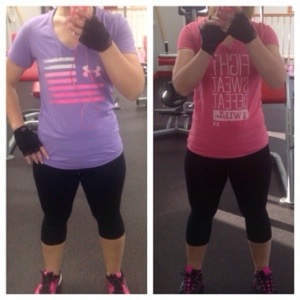
by EM2WL | Sep 23, 2015 | Building Muscle, Fat Loss / Cutting, Fitness Cycles (Periodization)
Burn fat and build muscle with this new ___________!!!
It’s the promise we’ve been hearing for years (decades?) yet many of us are still (unsuccessfully!) chasing these elusive results we hear promoted in every magazine, website, and TV/Radio station known to man. The advertising hype has us all wishing, hoping and searching high and low for this holy grail of diet and exercise where we accomplish two results in one fell swoop.
So…why isn’t it happening for many of us?
http://www.youtube.com/watch?v=THinQuExnxQ
Topics discussed in the video:
*What we already know about multitasking – it doesn’t work. Multi-tasking typically equates to doing more than one thing, inefficiently at best.
*Our metabolism is not built to (or efficient at) burning fat and building muscle at the same time. They require two completely different metabolic actions, and hormonal signals.
*Muscle building requires significant levels of insulin (a building hormone).
*Fat loss requires lowered insulin levels.
*When you strive to do both (while actually hoping for/focusing on weight loss), you end up burning through muscle stores rather than building them. This leads to the “skinny-fat” look. On the flip side, hoping/focusing solely on muscle gain can lead to feeling “fat” or puffy. The key lies in finding balance between the two.
*Understand that you need muscle in order to have the toned, tight look — and you need to reduce fat in order to see the muscle. Ultimately the look that most are striving for requires individualized focus on accomplishing both.
Solution Options:
1) Cycle phases dedicated to each: Increasing cals (above TDEE) for muscle building phases, and lowering cals (below TDEE) for fat loss phases. This means that you do NOT look to see fat gains during your muscle phases, or muscle growth during fat loss phases. The results within each phase are fastest with this option, but you may experience mental/physical turmoil of “feeling fat” during muscle gain phases, or missing your muscle gains as you cut fat (many people underestimate how much muscle they have under their fat layers). The best way that I’ve found to do this is to work with your natural times of month/year that you tend to eat this way (most people naturally eat in a cyclic manner without realizing it).

Body recomp can often feel like nothing is happening, because the changes are extremely slow and subtle. But if you put in the work, stay consistent, and take frequent pics, you will notice (like Melanie did!) how the changes compound ;)
2) Body recomp(osition): Eat at maintenance, utilizing a periodized workout plan, nailing your basic macronutrient goals. This is the the only safe way to multitask, and as stated before it’s means that you are not looking for drastic changes in one way or the other. This is a much slower process because you will essentially not see huge jumps in muscle gain OR fat loss at any one time. This can be a pro/con depending on your mentality and thought process. If you are happy seemingly at a standstill for a few years — knowing mentally that you ARE making changes — then this is the best route for you.
Summary
Non-stop dieting for a “look” should NEVER be an option, as it will never achieve the results that you want long term. Whether you choose to dive headfirst into fitness cycles, or take the slow and steady route – understand what your end goal is and accept that a lifestyle of perpetual dieting just won’t get you there, no matter how amazing the results look at first. With exception to newbie gains (which ultimately come to an end), metabolic multitasking is often severely over-touted and misunderstood. Instead of spinning your wheels, eating and exercising in a way that will do neither process efficiently, take the time to understand how to match your eating and exercising to your workouts and take charge of your journey again.
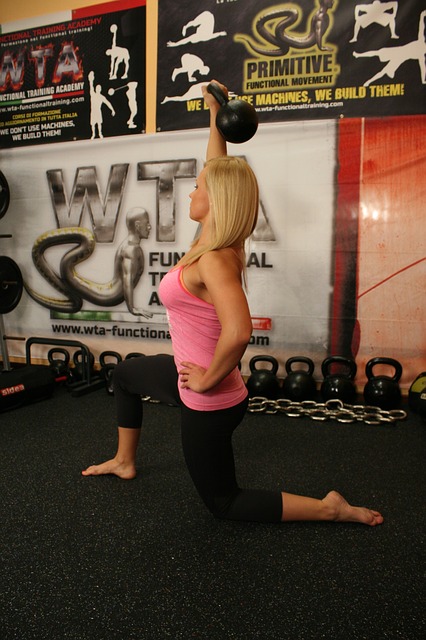
by Trish Adams | Jan 30, 2015 | Consistency, Fat Loss / Cutting, Fitness Cycles (Periodization)
Those of us who understand the importance of having “seasons” (cycles/phases) in our journey, tend to spend fall and winter focusing on building muscle size and strength. In fact, it’s very common to align your training phases with the actual seasons, taking advantage of the cover up in the colder months and then leaning out for the summer. If you are in this camp you probably will start planning your cutting phase to start late winter/early spring, giving you plenty of time to trim down for summer and avoid a last minute panic. Whether this is your first cutting phase or 10th, these tips will set you up for a successful experience.
1. Less is not more
Even though cutting calls for a caloric deficit, one of your goals should still be to maximize food intake while still losing fat. Starting with a small deficit of 5-10% allows you to do just that. Jumping straight to a big deficit like 20% means that should you need/want to adjust your deficit, you will be eating even less food (say it isn’t so!). While larger deficits might get the scale moving more quickly in the short term, they are also harder to stick with and can easily backfire.
2. Just say no to extreme restrictions

You CAN enjoy treats during cut!
While cutting, you may choose to adjust your macro ratio, but it shouldn’t be so drastic where you go from eating 200g carbs to 50g or start putting foods like bread, bananas or your favorite treats on a banned food list! Overly restricting food groups can lead to an unhealthy relationship with food or, worse, eating disorders like binge eating. And, honestly, how long would you be able to maintain that? Remember, if you won’t be able to sustain it throughout your cut, it will offer little benefit. Lowering your calorie intake doesn’t mean eliminating food groups.
3. Keep rocking the protein
By consuming less calories you will encourage the body to use more of its own resources for energy, preferably fat stores. During the process, however, we want to minimize lean tissue loss as much as possible. Remember metabolically active tissue (aka muscle) boosts your metabolism rate. Staying on top of your protein intake will aid in keeping it around. In fact, you might consider adding a little extra protein.
4. Diet breaks do a body good!
Deficit eating should not become your new standard of eating. Plan to take diet breaks every 4-6 weeks or so and return to normal eating for a week or more. Extended periods of dieting will lead to a new LOWER maintenance. It may be tempting to continue eating at a deficit, especially if you are steadily seeing progress. Don’t do it. Take the break!
5. Fat loss does not equate to crazy cardio
 Many of us, especially those who have experienced weight loss in the past from doing extensive cardio, may think it is the perfect time to reintroduce cardio as the mainstay of our fitness program and, as a result, start adding more of it to our regimen. After all, we’re trying to create a a deficit, right? Wrong. This is a mistake! Recall what Alwyn Cosgrove, author of the best-selling series New Rules of Lifting, said about the hierarchy of fat loss – nutrition is most important and activities that do not maintain muscle or increase metabolism (aka cardio) are least important. The reality is that your training should continue to be based in strength. No need for excessive cardio shenanigans!
Many of us, especially those who have experienced weight loss in the past from doing extensive cardio, may think it is the perfect time to reintroduce cardio as the mainstay of our fitness program and, as a result, start adding more of it to our regimen. After all, we’re trying to create a a deficit, right? Wrong. This is a mistake! Recall what Alwyn Cosgrove, author of the best-selling series New Rules of Lifting, said about the hierarchy of fat loss – nutrition is most important and activities that do not maintain muscle or increase metabolism (aka cardio) are least important. The reality is that your training should continue to be based in strength. No need for excessive cardio shenanigans!
6. Manage other stress
Deficits are stressful to the body and can be stressful mentally. Plan for it by including more relaxing activities in your program, such as low intensity/casual walks, meditation or whatever helps you to unwind. Make sure you are getting sufficient quality sleep as well. Here’s a great app that can help you establish a meditation practice www.headspace.com.
7. Outsmart your deficit
No one likes to feel deprived and one way to avoid those feelings is by including more nutrient dense foods in your meals! Keeping the volume of food high with low-calorie high fiber foods like veggies and fruit may help you avoid those diet-like feelings. Bonus: You’ll boost your nutritional profile at the same time.
8. Have patience and manage expectations

Like every other phase of your fitness journey, cutting requires time, consistency and patience. If it is your first time cutting, you may have high expectations, however, just like building muscle takes time, losing fat does as well. Don’t expect your clothes to be suddenly falling off you after two weeks. You can speed the process up by truly being consistent with your efforts and keeping a positive mindset.
9. Remember, you are an individual
If you are starting your cutting phase with a friend or are following someone else’s journey via social media, resist the urge to start comparing your progress. It is tempting, but it can also be the perfect set up for disappointment. Two people following the same program, eating the same foods, etc. can yield very different results. Think about a few of the factors that come into play here – age, weight, height, genetics, body composition, hormone balance, lifestyle habits, etc. Don’t fall into the trap of judging your progress by another’s. Whether fast or slow, celebrate your progress!
10. Look at the big picture
Of you that is! Make sure that you are taking progress pics. Very often we zoom in on our (not so) favorite trouble spots, not noticing changes taking place in other areas. Our bodies really don’t care that you’d like to trim a few inches off your thighs or tummy. Fat loss happens where it happens. Period. Make sure you’re looking at the big picture to truly assess your progress.
Bottom line: your fat loss (cutting) phase, just as any other phase in your program (muscle building, maintenance, reset, chill) should have a beginning and an end. Staying in any one phase for too long can have adverse effects (read: no ONE phase will give you *all* the results, so cycle through them for continued results).
Take your phases slow and steady. Approach with INTENTION, then take a break. Be diligent in developing the habits you need (in the kitchen and in the gym), but resist the urge to focus solely on calorie burns or excessive cardio. Use some or all of these tips and you will be on your way to killing your next cut!
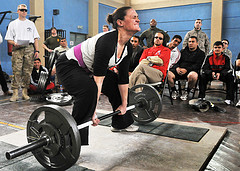
by EM2WL | Nov 4, 2014 | Fitness Cycles (Periodization)
Tips for Increasing Deadlift and Squat Strength
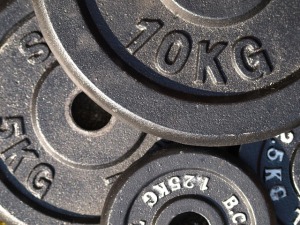 Let’s face it – that beast feeling on a certain lift, or killing a new Personal Record (PR) at the gym just feels good. The first time I was able to bench/squat/deadlift my body weight will always land somewhere in my top 5 all time “beast moments” (right next to hitting double digit pull-ups). For women especially, strength is empowering, and getting stronger is a sense of accomplishment like no other. If you’ve been lifting for a while and are ready to start pushing your maxes to the next level, it’s good to know a few basic tricks of the strength trade. Understanding what could help you to blast through your strength plateaus, will have you adding more plates to the bar, more often.
Let’s face it – that beast feeling on a certain lift, or killing a new Personal Record (PR) at the gym just feels good. The first time I was able to bench/squat/deadlift my body weight will always land somewhere in my top 5 all time “beast moments” (right next to hitting double digit pull-ups). For women especially, strength is empowering, and getting stronger is a sense of accomplishment like no other. If you’ve been lifting for a while and are ready to start pushing your maxes to the next level, it’s good to know a few basic tricks of the strength trade. Understanding what could help you to blast through your strength plateaus, will have you adding more plates to the bar, more often.
Today, let’s look at two basic compound lifts for the lower body – the deadlift and the squat.
Deadlifts:
Grip Strength– One huge component to increasing deadlift numbers is to increase your grip strength. If your back and legs can pull a certain weight but the bar is slipping from your fingers, it’s a no-go. In order to get a stronger grip, try things such as farmer walks and hanging from a pull up bar (arms extended) for as long as possible. The key is that endurance of the smaller muscles is required in order to put up big numbers. So in addition to adding these types of exercises into your routine, be sure to use a periodized rotation that phases in lighter weights/higher reps from time to time, for the sole purpose of building that endurance.
 Grip Positioning– Some people prefer to grip both hands overhand, both hands underhand or a mix of both. It’s important to start with what feels most comfortable and adjust as you become more confident in the lift. If you grip both under and overhand for example, you may find that switching which hand is over and which is under gives you a better and stronger grip. Try all three methods to see which works best for you.
Grip Positioning– Some people prefer to grip both hands overhand, both hands underhand or a mix of both. It’s important to start with what feels most comfortable and adjust as you become more confident in the lift. If you grip both under and overhand for example, you may find that switching which hand is over and which is under gives you a better and stronger grip. Try all three methods to see which works best for you.
Stance Styles– Some people deadlift sumo-style (very wide stance) and others do so conventionally (shoulder width). If you’re struggling with deadlift as you currently do it, change up the stance. You may find you are stronger in one than the other, as often is the case. If you have long arms and a short torso, conventional style is recommended. If your torso is longer and your arms are shorter, try sumo.
Using hooks, straps or other accessories can and should be a last resort for when you are A) an intermediate to advanced lifter, really trying to break a plateau on an all out lift, and/or B) at the end of a workout when your smaller muscles have been fully fatigued — but you need to press on for whatever reason. These tools can be extremely helpful in those scenarios, but can easily cause a dependency in newer lifters who truly should be developing proper grip strength and forearm endurance before attempting to lift very heavy weight. There are always exceptions to the above (such as having carpal tunnel, or other issue that inhibits grip abilities for longer periods of time), but generally most recreational lifters can leave the accessories to vet bodybuilders and powerlifters. Gloves are another accessory that may be of great assistance to one person but a hindrance to another. If gloves help you, it’s perfectly fine to use them throughout your workout. If they seem to be obstructing your lift, try using chalk instead to assist with grip without the bulk.
Squats:
 Increase Flexibility– As beginner lifters we, ironically, tend to skip out on the most fundamental areas of strength training. We place all the emphasis on the actual lift — and not what is surrounding it (warmup, cool-down, stretching) — creating a nasty habit as time progresses. As a result, we get tighter and tighter over time, eventually bringing our results to a screeching halt. If there’s one thing that vet lifters know is that flexibility is the cornerstone of any great lift. You’ll need sufficient flexibility in your ankles and hips in order to squat safely and properly, especially with a good bit of weight. Work on increasing your flexibility in these areas. Try hip flexor stretches, tennis ball rolling on your feet/ankles, knee hugs, and side to side leg swings. Always remember to do a proper warm up and cool down before lifting.
Increase Flexibility– As beginner lifters we, ironically, tend to skip out on the most fundamental areas of strength training. We place all the emphasis on the actual lift — and not what is surrounding it (warmup, cool-down, stretching) — creating a nasty habit as time progresses. As a result, we get tighter and tighter over time, eventually bringing our results to a screeching halt. If there’s one thing that vet lifters know is that flexibility is the cornerstone of any great lift. You’ll need sufficient flexibility in your ankles and hips in order to squat safely and properly, especially with a good bit of weight. Work on increasing your flexibility in these areas. Try hip flexor stretches, tennis ball rolling on your feet/ankles, knee hugs, and side to side leg swings. Always remember to do a proper warm up and cool down before lifting.
Deloading – if you have a problem with flexibility (you’ve hit a plateau, can’t squat past parallel, or feel the lift in your knees), then it’s likely time to deload. Take a break, decrease the load on the bar and work on endurance, flexibility, and form. If you can’t perform a full range-of-motion (ROM) squat without weight, there’s no reason to go loading up the bar again just yet. After some down time, slowly start increasing the weight again, stopping whenever you reach a weight that you does not allow you full ROM. Work through any inflexibility and move on only when you can do the move properly with the intended weight amount. Practicing any lift with only partial ROM will compound the problem. Deloading every 4-10 weeks and placing some much needed focus on flexibility and bodyweight ROM can go a long way in improving your PRs when it’s time to hit it hard again.
Experiment with Grip Width– Some people do better (especially on heavy squats) with a wide grip versus a narrower one. Depending on wrist strength too, some grips work better than others. For example, some people find they have better control of the bar when they are gripping really wide on heavy squats. If your legs can handle the weight but the bar is slipping off your back, what’s the point? Find a grip width that works for you and helps you execute the squat properly and safely.
Compound lifts are all around excellent exercises as they require the engagement of a ton of muscles in order to execute. Our bodies love the benefits of compound lifts. By being able to pull or squat even more weight on these lifts, you’ll be seeing the results in no time. Not only will you be hitting new PR’s, but you’ll be rocking a more tight, lean and strong LOOKING physique, too!

Focusing on strength has taken Cheri mentally and physically to the next level (click for her story!).
Photo cred: Drew Stephens, Isafmedia, photostock




 Plateau Prevention 101: Workouts
Plateau Prevention 101: Workouts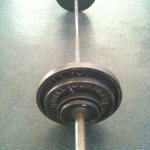











Recent Comments